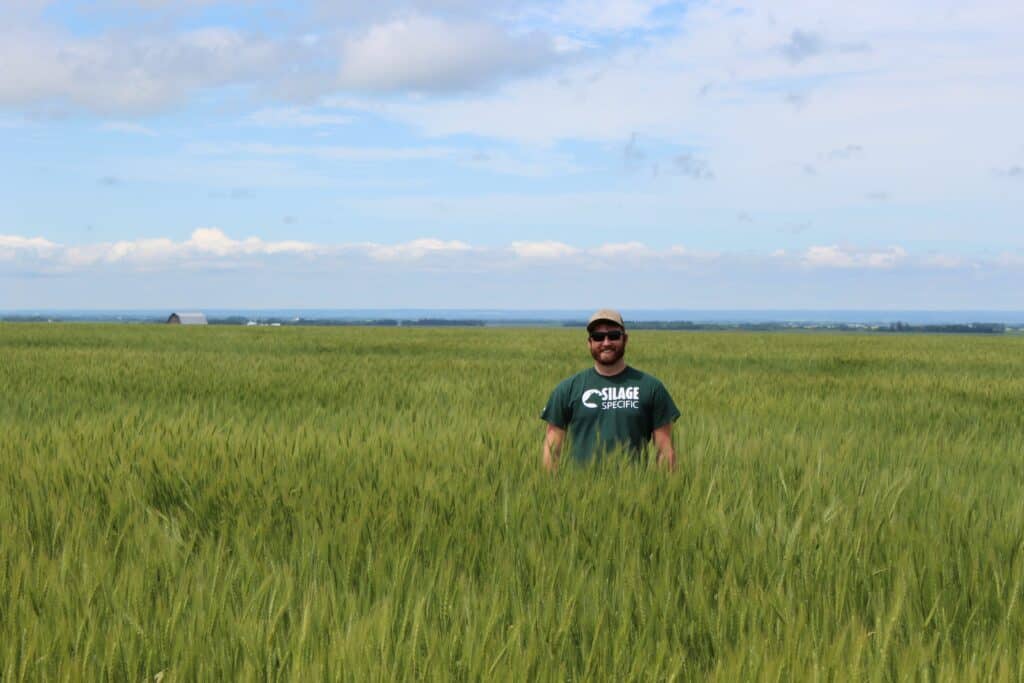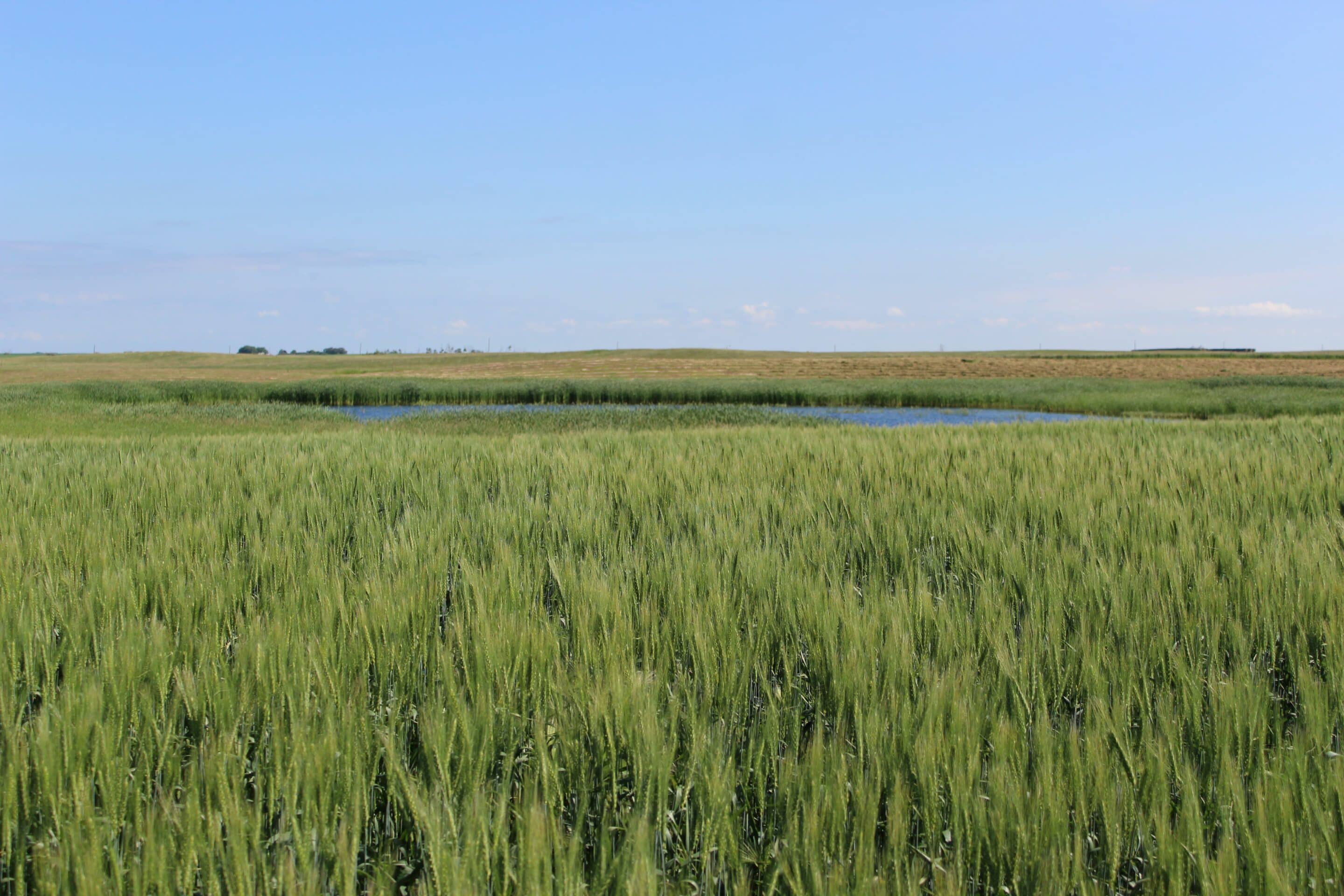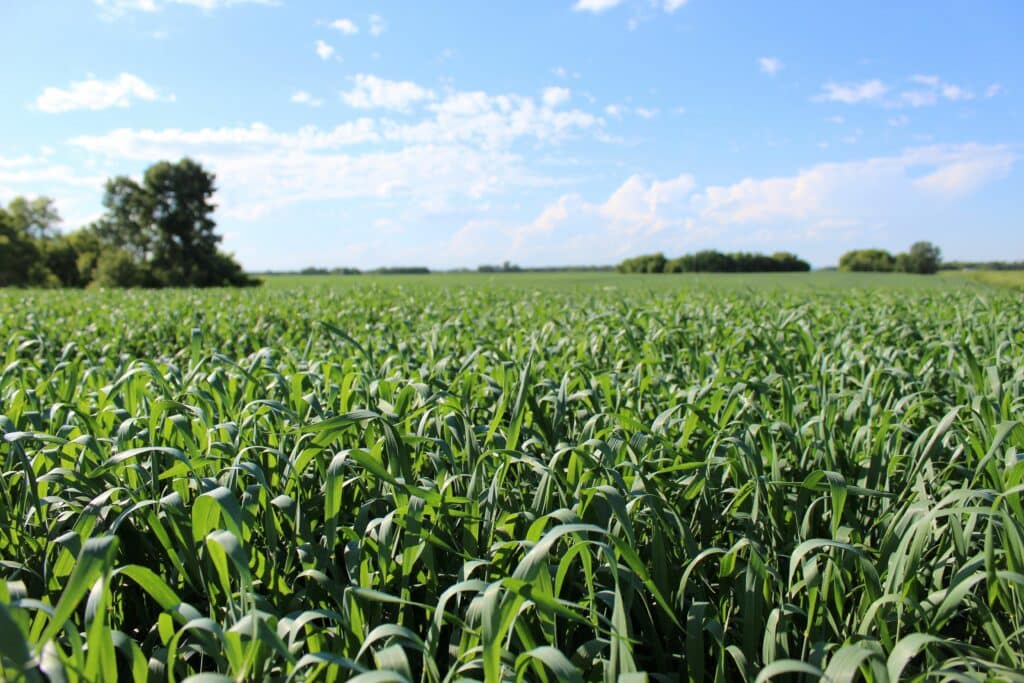Shock, dismay for those in involved as Alberta winter wheat agronomy program axed.
The origin of winter wheat in the West has a long, scrappy history. What was truly an overlooked, if-I-have-time crop choice for fall has been transformed in a generation to become one of the highest yielding, most agronomically reliable crops for farmers on the Prairies. There have been many key players that have helped raise the profile of winter wheat, especially in Alberta. The current face of this success is Brian Beres, a federal senior research scientist focused on agronomy at the Lethbridge Research and Development Centre. Of his 32 years in public service, 23 of those have focused on winter wheat agronomy research. Usually, though, winter wheat is looked at one way, and one way only.
“It’s a bit of an orphan crop,” says Beres. “It’s never going to that sort of premium export class of wheat or anything like that, but it’s got a lot of value to grain merchants, the stakeholders, and growers of winter wheat, yet it gets overlooked. A good, high protein winter wheat is often used to blend off shipments of CWRS to enhance supply to meet a certain customer spec with respect to grain protein or some other quality parameter.”

Brian Beres, a federal senior research scientist focused on agronomy at the Lethbridge Research and Development Centre
Despite that, breeding and agronomy research has always received regular funding over the years and Beres imagined his 2022 funding application would be no different. However, when he put forward his latest funding application to extend winter wheat agronomy for another five years, it was outright rejected — wholly denied even $1 of financial backing. A major funding program for research now comes through the S-CAP — S for Sustainable — and carries with it major changes from its predecessor, the Canada Agricultural Partnership (CAP). Top priorities now include climate change mitigation and greenhouse gas reductions — Beres views this as a big time missed opportunity.
“The irony of winter wheat is that it’s always been positioned as a sort of ecofriendly crop because it provides not just the agronomic and economic benefits, but also an array of ecosystem services,” he says. “It’s one of the ideal crops for no-till farming systems and critical for nesting habitat of upland gamebird species. So, as we march towards this increased prioritization on climate smart agriculture on the farm, it’s one of the more resilient crops best positioned as a solution for climate mitigation. We’re now dealing with a proposal that was dead before it even got rolled into a cluster proposal and submitted to Ottawa.”
To receive funding through a crop cluster, researchers write a project proposal and then send it to a funding body, such as a crop commission or funding consortium, who will represent the funders as the industry applicant. A funder then reviews all the proposals believed to have the best chance of being funded, before submitting them to the Programs Branch of Agriculture and Agri-food Canada. From there, projects will be funded, or they won’t.
Beres sees the abrupt change in direction with two-fold consequences. The first is that this isn’t just an Alberta-centric program. His program is based in Alberta, but he has collaborators across the Prairies, ensuring the knowledge and benefits are for all Western Canadian farmers. He describes it as a ripple effect, which primarily will be first felt with the loss of agronomic best practices, followed by fewer quality varieties being released and commercialized.
He explains a program can’t be turned on and off like a light switch and expect zero hiccups.
“People talk about continuity with breeding programs, but if you don’t have it on the agronomy side, once there’s a gap in that innovation pipeline of agronomy and best practices, it’s really hard to get it going again,” he says. “If, all of a sudden, we paused breeding in winter wheat for a while, it would be very hard to get the kind of pull you would need from the decision-makers and the funders to resurrect it; same applies to the agronomy piece.”
One of the key pieces lost within this is Beres’ five years of rotational study data which compares wheat class performance. As he pointed out on social media, that study “now bites the dust.”
While Beres respects the decision, he doesn’t agree with it.
“It’s a mistake for winter wheat agronomy to fall through the cracks, particularly when it checked all the right boxes for S-CAP priorities” he says. “I’ve always tailored my own agronomy program based on the needs of farmer groups and funding stakeholders because they are the ones that basically send the message to government and other funding agencies as to what the priority should be. We’ll eventually see what they decided to fund instead.”
Other programs on the breeding side were trimmed back as well, so Beres wasn’t shocked when he was asked to do the same for his asks. However, “the whole thing getting killed after the budget reduction exercise was a surprise for sure.”
For the moment, winter wheat is perhaps at its apex of prominence in Western Canada. Although acres appear unlikely to burst through the two-million-acre mark — achieved only five times and most recently in 2014 — the agronomy and breeding programs have worked hand-in-glove in recent memory to produce top varieties. A recently retired scientist and longtime colleague of Beres, Rob Graf was a prolific winter wheat breeder at Lethbridge. As his public service career came to an end last year, he had put out multiple high-performing varieties including Emerson, Wildfire and, most recently, Vortex and Coldfront. In 2022, Graf’s collective varieties, of which Beres’ agronomic fingerprints can easily be seen, accounted for almost 90 per cent of all seeded winter wheat acres in the West.
Graf himself explains that their industry-focused approach integrated genetic solutions through cultivar breeding, combined with management solutions via agronomic research, resulted in a huge increase in productivity and marketability in a short period of time. That now stands to be lost.
“Without sustained funding in both areas, the rates of genetic and on-farm gain witnessed in recent years will inevitably decline, making the crop less attractive at a time when new options that provide producer flexibility are more important than ever,” says Graf.
Beres flatly calls it the end of an era.
“It was 22 years of building incremental improvements to winter wheat production systems yielding some really cool results and publications,” he says. “Rob and I were able to establish a really good hub of research that exemplified a classic GxExM approach, which was impactful for the whole industry. I really found it rewarding and I would hope the winter wheat value chain found the results of it impactful as well.”
One group not too happy with the lack of funding is Ducks Unlimited Canada, the organization that has always been a big proponent of winter wheat. Not only does it help with water conservation, but various bird species also find homes in winter wheat stubble and help biodiversity thrive in farmers’ fields 365 days a year. Research has shown certain waterfowl were considerably more productive when nesting in winter wheat versus spring wheat stubble.
Alex Griffiths, agrologist with Ducks Unlimited Canada, describes feeling “sad” and “frustrated” for Beres’ and his agronomy program.
“It’s obviously not ideal and I wasn’t happy to hear that because Brian was doing great work,” explains Griffiths.
He says people grow winter wheat for many reasons, but chief among them include improving soil health as well as improved water and nutrient use efficiency. All those factors lead back to winter cereals.

Alex Griffiths, agrologist with Ducks Unlimited Canada stands in a field of CDC Buteo hard red winter wheat during the 2022 growing season. Photo: Alex Griffiths
“Winter hardiness is a trait that’s always being bred for because if it doesn’t make it through the winter, people aren’t going to grow it,” says Griffiths. “If we get to the point where we’re missing out on potentially good, proper agronomics … then people are going to be less successful than they could have been and there’s probably going to be fewer acres.”
Growing winter wheat itself is much more challenging compared to spring wheat, Griffiths says. From managing immobile nutrients such as phosphorus and potassium to proper nitrogen timing, it’s a fantastic crop to grow, but one that requires attention.
He’s optimistic that winter wheat won’t simply disappear but can’t help to lament the lack of funding in Lethbridge.
“It’s just disappointing on the whole,” says Griffiths.
Header photo — A field of AAC Wildfire hard red winter wheat during the 2022 growing season. Photo: Alex Griffiths
Related Articles
In Ag Research, Losing Funding Can Have Big Ripple Effects







